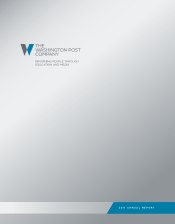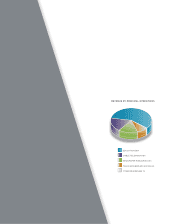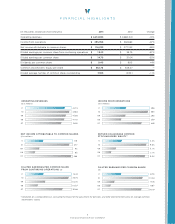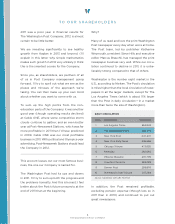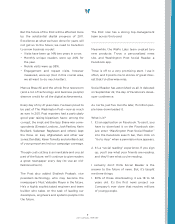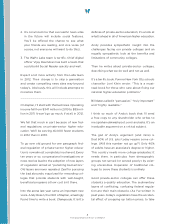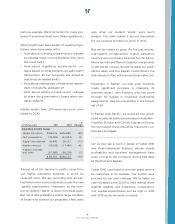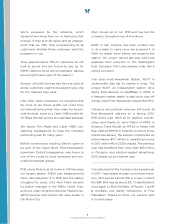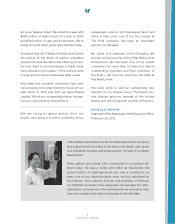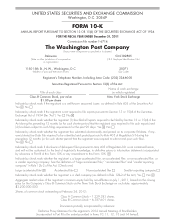Washington Post 2011 Annual Report Download - page 4
Download and view the complete annual report
Please find page 4 of the 2011 Washington Post annual report below. You can navigate through the pages in the report by either clicking on the pages listed below, or by using the keyword search tool below to find specific information within the annual report.
2011 was a poor year in financial results for
The Washington Post Company; 2012 is almost
certain to be little better.
We are investing significantly to see healthy
growth from Kaplan in 2013 and beyond. (I’ll
explain in this letter why simple mathematics
makes such growth in 2012 very unlikely.) I think
this is the smartest course for the Company.
Since you, as shareholders, are partners of all
of us in Post Company management going
forward, I’ll try to spell out what we see as the
pluses and minuses of the approach we’re
taking. You can then make up your own mind
about whether you want to come with us.
To sum up the high points from the non-
education parts of the Company: it was another
good year (though operating results declined)
at Cable ONE, where some competitive storm
clouds continue to gather; and an even better
year at Post–Newsweek Stations, which was far
more profitable in 2011 than I’d have predicted
in 2009. Cable ONE was our most profitable
business in 2011. With political and Olympics-year
advertising, Post–Newsweek Stations should lead
the Company in 2012.
This account leaves out our most famous busi-
ness, the one our Company is named for.
The Washington Post had its ups and downs
in 2011. I’ll try to sum up both the progress and
the problems honestly. And this is honest: I feel
better about the Post’s future prospects at the
end of 2011 than at the beginning.
Why?
Many of us read and love the print Washington
Post newspaper every day when we’re at home.
The Post team, led by publisher Katharine
Weymouth, president Steve Hills and executive
editor Marcus Brauchli, has managed the print
newspaper business very well. While our circu-
lation continued to decline in 2011, it is unbe-
lievably strong compared to that of others.
Washington is the number eight market in the
U.S., according to Nielsen. The Post’s circulation
is miles higher than the local circulation of news-
papers in all the larger markets, except for The
Los Angeles Times (which is about 11% larger
than the Post in daily circulation — in a market
more than twice the size of Washington).
DAILY CIRCULATION
Rank Newspaper Total Print
1 Los Angeles Times 534,843
2 The Washington Post 480,310
3 New York Post 441,201
4 New York Daily News 435,656
5 Chicago Tribune 41 3,630
6 Newsday 292,056
7 Phoenix Republic 291,799
8 Houston Chronicle 259,098
9 Denver Post 258,876
10 Minneapolis Star-Tribune 247,264
Source: September 2011 ABC FAS-FAX
In addition, the Post remained profitable,
excluding pension expense (though less so in
2011 than in 2010) and continued to put out
great newspapers.
2
THE WASHINGTON POST COMPANY
TO OUR SHAREHOLDERS

